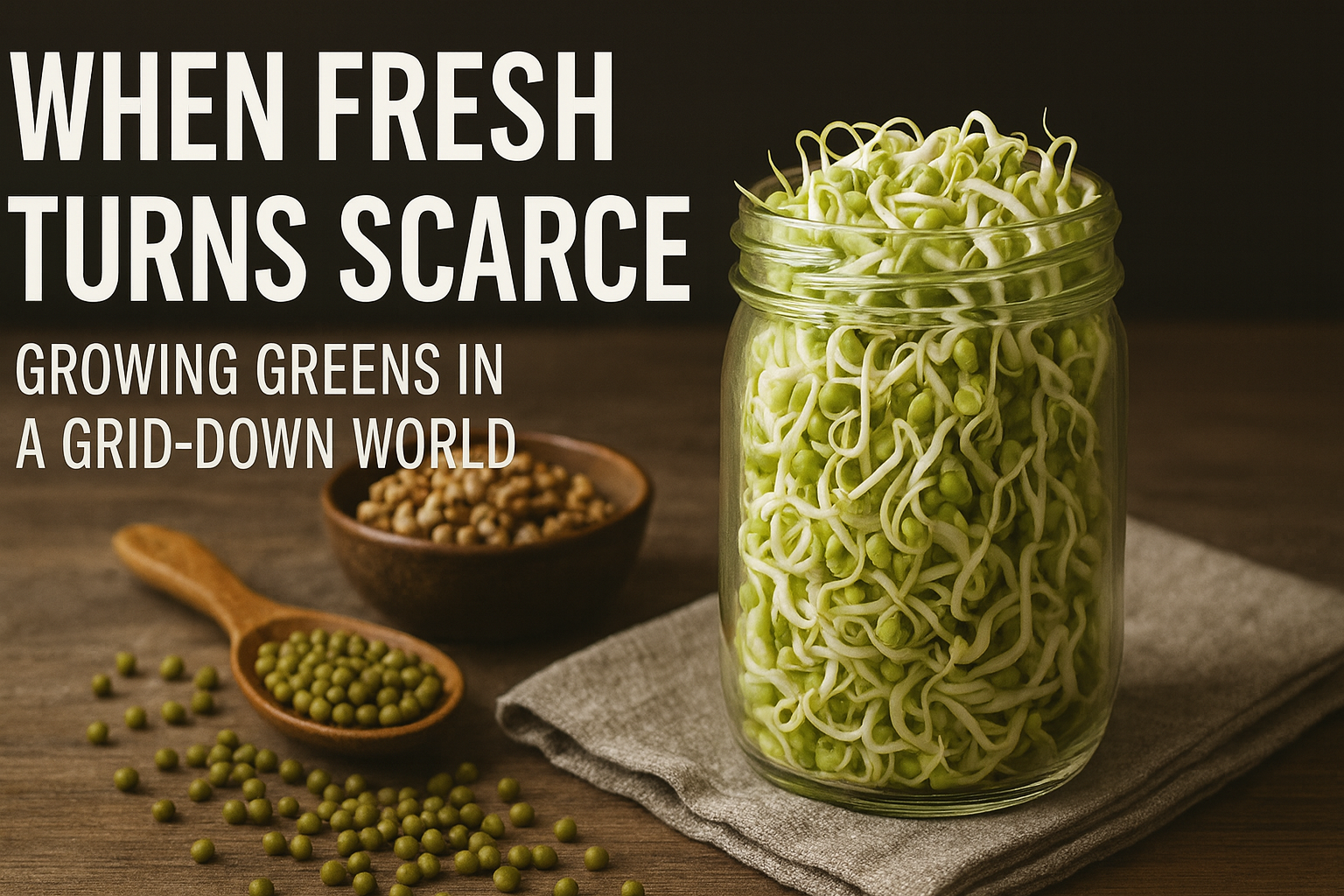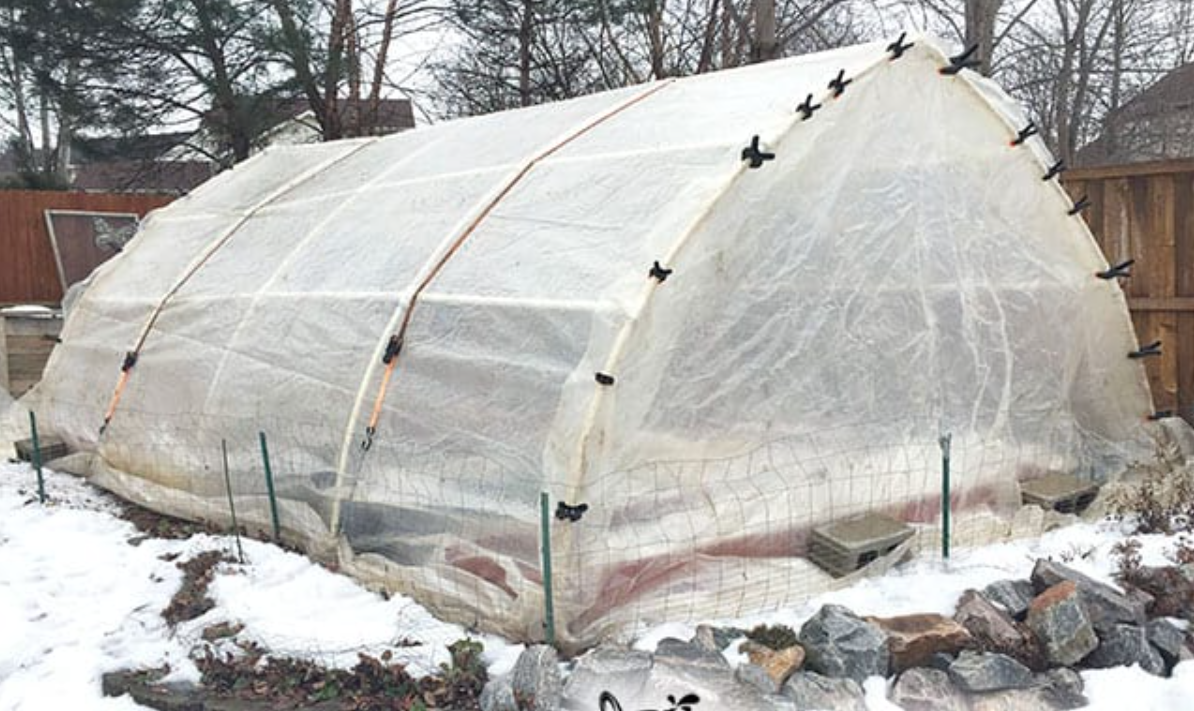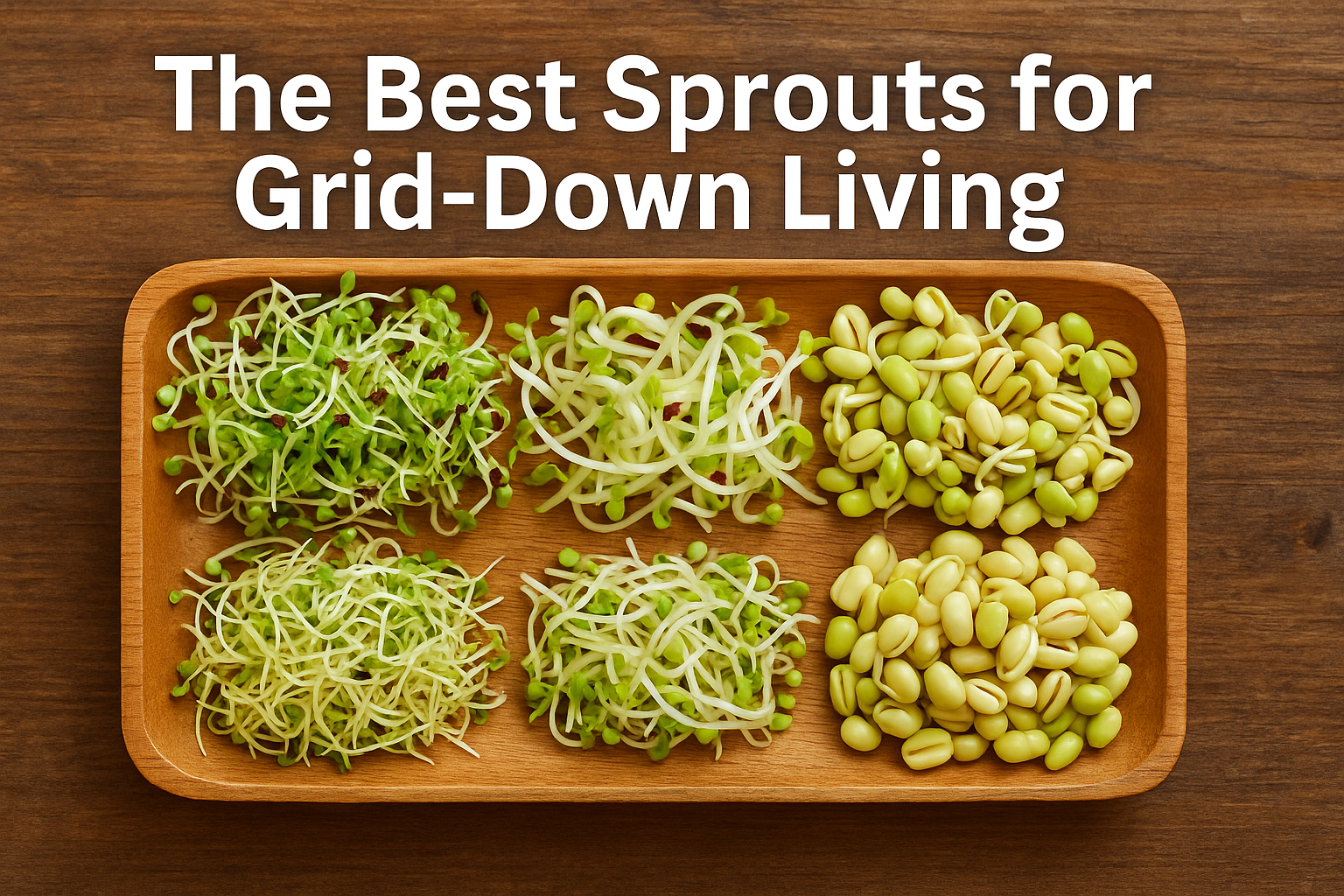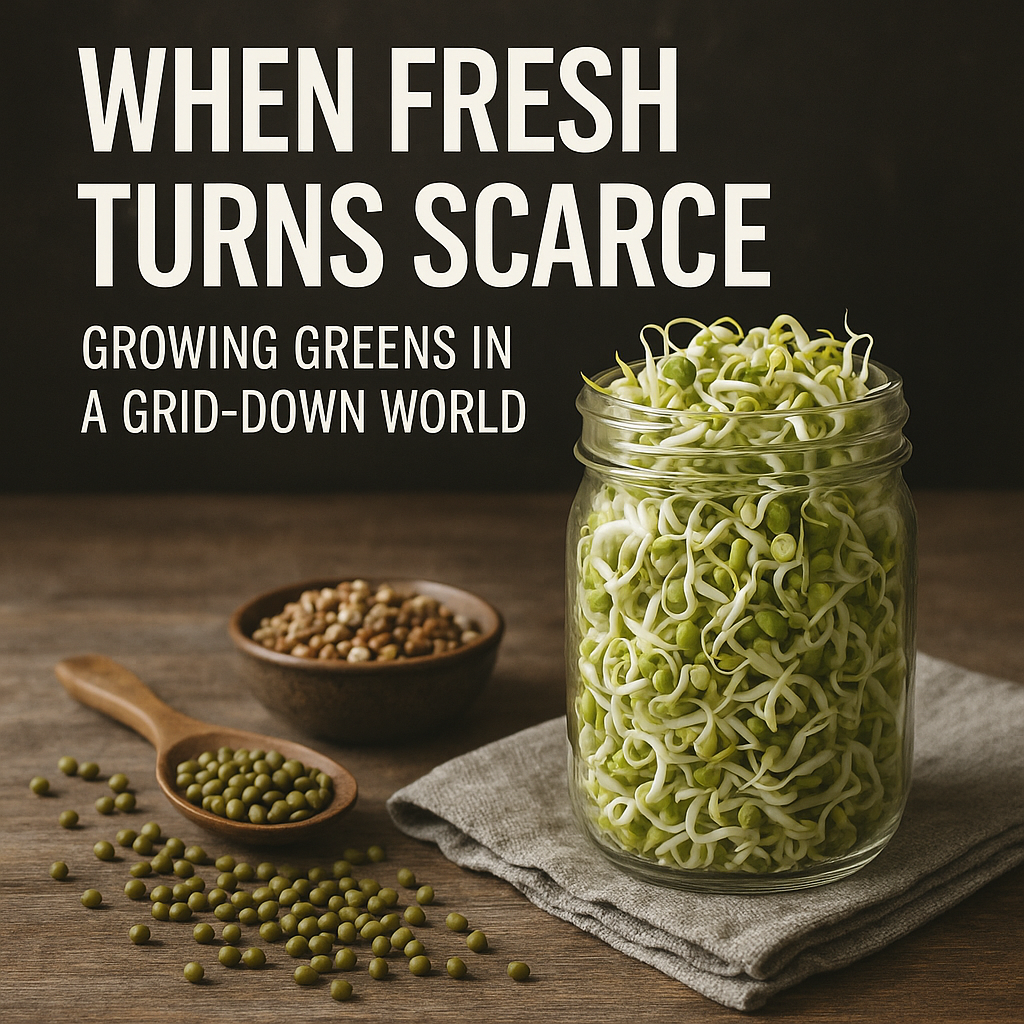In The Ridge Plan, survival isn’t about isolation—it’s about foresight, adaptability, and the quiet strength of community. Growing something as simple as sprouts reminds us that resilience starts with small, deliberate acts—choices that turn scarcity into self-reliance and uncertainty into hope.
When Fresh Turns Scarce: Growing Greens in a Grid-Down World

When people imagine long-term survival, most think of rice, beans, and canned goods stacked in tidy rows. But in any extended disruption—whether it’s a regional blackout or a full-scale SHTF collapse—the first thing to vanish from diets isn’t calories. It’s freshness.
Leafy greens and vegetables are difficult to store long-term. Their shelf life is short, refrigeration is unreliable once the power fails, and traditional gardening may not be possible if seasons, soil, or security conditions turn against you. The body can survive for months on dry staples, but over time the lack of fresh nutrients—especially vitamin C, folate, and certain enzymes—starts to take its toll. Fatigue sets in. Wounds heal slower. Morale dips. What we miss most isn’t the luxury of flavor, but the vitality that comes from something alive on the plate.
That’s where sprouts come in.
Sprouting is one of the simplest, most space-efficient ways to grow fresh food indoors. A handful of beans, seeds, or lentils can transform into a nutrient-dense crop in less than a week—no sunlight, soil, or electricity required. All it takes is a quart-size jar, a mesh lid or piece of breathable cloth, and clean water.
The process is almost foolproof. Measure a few tablespoons of mung beans, lentils, or broccoli seeds into the jar and soak them overnight. In the morning, drain the water, rinse, and set the jar upside down at a gentle angle to allow air circulation. Rinse and drain twice a day. Within three to five days, the seeds burst to life, producing crisp, edible greens packed with vitamins, amino acids, and enzymes that weren’t available in the dormant seed.
Sprouts bridge the gap between stored calories and living food. They require no power draw, no grow lights, and virtually no maintenance. In tight quarters—basements, RVs, or safe rooms—they thrive. During The Ridge Plan’s fictional collapse, this small act of cultivation could mean the difference between survival and decline. A quart jar of sprouts beside a pot of rice and beans transforms a ration into a meal. It’s a lesson in sustainability and morale alike.
For anyone building their own resilience plan, stock a few pounds of sprouting seeds alongside your dry staples. They’re light, inexpensive, and have a long shelf life when stored in cool, dry conditions. Mung beans, alfalfa, broccoli, lentils, and radish are all excellent choices—each offering a different nutrient profile and taste.
Preparedness isn’t just about calories—it’s about continuity of health. Sprouts deliver that bridge, quietly and reliably, even when the world outside has stopped growing.





